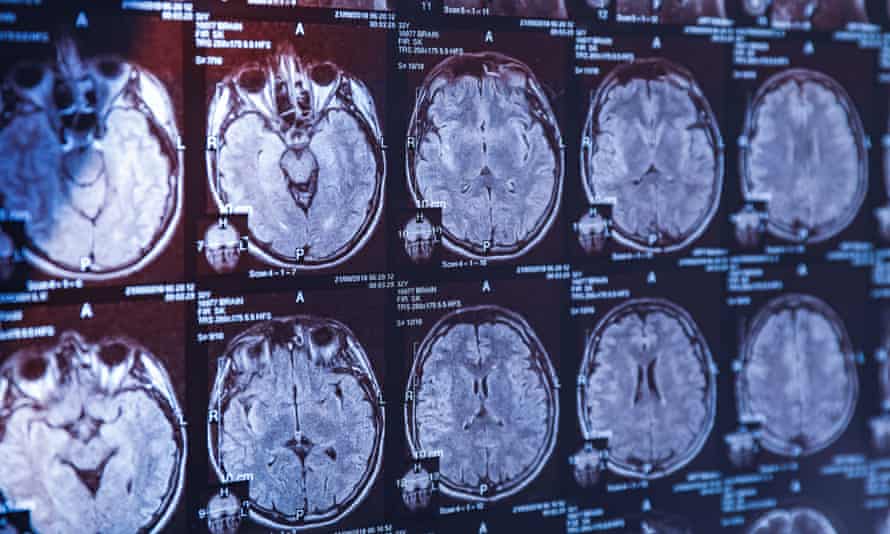This Blog Post is now in the queue for publishing as requested.
Depending on transfer load expect completion in around 15 minutes or 60 minutes if it has just been published by the owner.
This Blog Post has been removed from the queue for publishing as requested.
Scientists discover why the human brain is so big
Posted by
Otto Knotzer on March 26, 2021 - 5:07am Edited 3/26 at 5:10am
Molecular switch makes human organ three times larger than great apes’, study finds

It is one of the defining attributes of being human: when compared with our closest primate relatives, we have incredibly large brains.
Now scientists have shed light on the reasons for the difference, by collecting cells from humans, chimps and gorillas and turning them into lumps of brain in the laboratory.
Tests on the tiny “brain organoids” reveal a hitherto unknown molecular switch that controls brain growth and makes the human organ three times larger than brains in the great apes.
Tinker with the switch and the human brain loses its growth advantage, while the great ape brain can be made to grow more like a human’s.
“What we see is a difference in cellular behaviour very, very early on that allows the human brain to grow larger,” said Dr Madeleine Lancaster, a developmental biologist at the Medical Research Council’s Laboratory of Molecular Biology in Cambridge. “We are able to account for almost all of the size difference.”
The healthy human brain typically reaches about 1,500cm3 in adulthood, roughly three times the size of the 500cm3 gorilla brain or the 400cm3 chimp brain. But working out why has been fraught with difficulty, not least because developing human and great ape brains cannot easily be studied.
In an effort to understand the process, Lancaster and her colleagues collected cells, often left over from medical tests or operations, from humans, gorillas and chimps, and reprogrammed them into stem cells. They then grew these cells in such a way that encouraged them to turn into brain organoids – little lumps of brain tissue a few millimetres wide.
After several weeks, the human brain organoids were by far the largest of the lot, and close examination revealed why. In human brain tissue, so-called neural progenitor cells – which go on to make all of the cells in the brain – divided more than those in great ape brain tissue.
Lancaster, whose study is published in Cell, added: “You have an increase in the number of those cells, so once they switch to making the different brain cells, including neurons, you have more to start with, so you get an increase in the whole population of brain cells across the entire cortex.”
Mathematical modelling of the process showed that the difference in cell proliferation happens so early in brain development, that it ultimately leads to a near doubling in the number of neurons in the adult human cerebral cortex compared with that in the great apes.
The researchers went on to identify a gene that is crucial to the process. Known as Zeb2, it switches on later in human tissue, allowing the cells to divide more before they mature. Tests showed that delaying the effects of Zeb2 made gorilla brain tissue grow larger, while turning it on sooner in human brain organoids made them grow more like the ape ones.
John Mason, professor of molecular neural development at the University of Edinburgh, who was not involved in the research, said it highlighted the power of organoids for the study of brain development.
“It’s important to understand how the brain develops normally, partly because it helps us understand what makes humans unique and partly because it can give us important insights into how neurodevelopmental disorders can arise,” he said.
“Brain size can be affected in some neurodevelopment disorders, for example macrocephaly is a feature of some autism spectrum disorders, so understanding these very fundamental processes of embryonic brain development could lead to better understanding of such disorders,” he added.
From kitchens and attics, sofas and bedrooms, Guardian journalists have toiled through an epic year of disruption and dislocation to bring readers clear, trustworthy news of the pandemic. We’re glad to have been of service to you and many like you in Hungary.
Through these turbulent and challenging times, millions rely on the Guardian for independent journalism that stands for truth and integrity, your window on a bewildering world. Readers chose to support us financially more than 1.5 million times in 2020, joining existing supporters in 180 countries.
With your help, we will continue to provide high-impact reporting that can counter misinformation and offer an authoritative, trustworthy source of news for everyone. With no shareholders or billionaire owner, we set our own agenda and provide truth-seeking journalism that’s free from commercial and political influence. When it’s never mattered more, we can investigate and challenge without fear or favour.
Unlike many others, we have maintained our choice: to keep Guardian journalism open for all readers, regardless of where they live or what they can afford to pay. We do this because we believe in information equality, where everyone deserves to read accurate news and thoughtful analysis. Greater numbers of people are staying well-informed on world events, and being inspired to take meaningful action.


